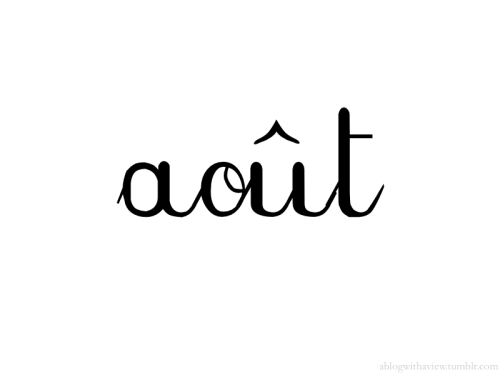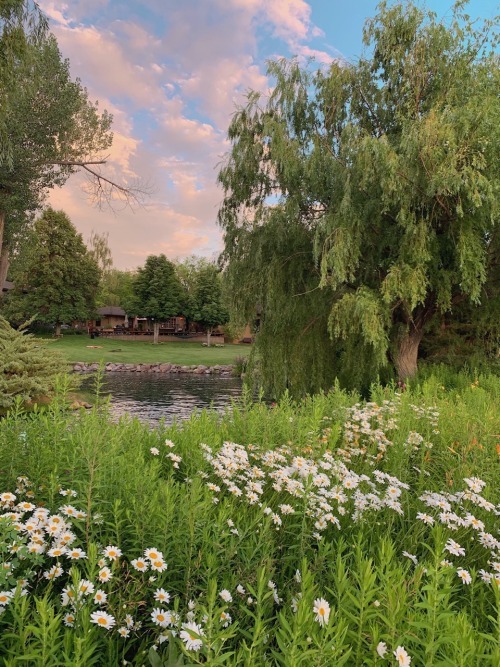Theblogofwildfellhall

More Posts from Theblogofwildfellhall and Others

how to ask questions in french 💗
1. Est-ce que
literally “is it that,” can be placed at the beginning of any affirmative sentence to turn it into a question:
Est-ce que vous dansez ? Do you dance? Est-ce que tu veux voir un film ? Do you want to see a movie? Est-ce qu'il est arrivé ? Has he arrived? Place any question words in front of est-ce que: (eg. quand, quel, où) Quand est-ce que tu veux partir ? When do you want to leave? Pourquoi est-ce qu’il a menti ? Why did he lie? Quel livre est-ce que vous cherchez ? Which book are you looking for?
2. Inversion
A more formal way to ask questions is with inversion. Invert the conjugated verb and subject pronoun and join them with a hyphen:
Dansez-vous ? Do you dance? Veux-tu voir un film ? Do you want to see a movie? Est-il arrivé ? Has he arrived? Again, place any interrogative words at the beginning of the question: Quand veux-tu partir ? When do you want to leave? Pourquoi a-t-il menti ? Why did he lie? Quel livre cherchez-vous ? Which book are you looking for? You can use inversion to ask negative questions. Ne dansez-vous pas ? Don’t you dance? N'est-il pas encore arrivé ? Hasn’t he arrived yet?
3. Statement as question
A very simple but informal way to ask yes/no questions is to raise the pitch of your voice while pronouncing any sentence:
Vous dansez ? You dance? Tu veux voir un film ? You want to see a movie? Il est arrivé ? He arrived? You can also use this structure to ask negative questions: Tu ne danses pas ? You don’t dance? Il n'est pas encore arrivé ? He hasn’t arrived yet?
4. N'est-ce pas?
If you’re pretty sure the answer to your question is yes, you can just make an affirmative statement and then add the tag n'est-ce pas ? to the end. This is also informal:
Tu danses, n'est-ce pas ? You dance, right? Tu veux voir un film, n'est-ce pas ? You want to see a movie, right? Il est arrivé, n'est-ce pas ? He arrived, right?
5. Notes
The French equivalent of the verb “to ask” is demander, but “to ask a question” is “poser une question.”
There are two main types of questions:
Yes/no questions, also known as polar questions or closed questions (questions fermées), ask for a simple yes or no answer.
Information questions, also known as WH questions, constituent questions, or open questions (questions ouvertes), ask for information with question words, like who, what, when, where, why, which, how, how much/many.
When using inversion with the third person singular (il, elle, or on) and a verb that ends in a vowel, you must add t- between the verb and subject pronoun:
Aime-t-il les films ? - Does he like movies? A-t-on décidé ? - Have we decided? Écoute-t-elle la radio ? - Does she listen to the radio?
There is a special French word, si, that is used only when responding in the affirmative to a negative question.
- Vas-tu au ciné ? - Oui ! - Are you going to the movies? - Yes! - Ne vas-tu pas au ciné ? - Si ! - Aren’t you going to the movies? - Yes (I am)! - Est-ce que tu veux venir ? - Oui ! - Do you want to come? - Yes! - Tu ne veux pas venir ? - Si ! - You don’t want to come? - Yes (I do)


German is not that difficult as we think. Learning a new language is always a struggle in the beginning but with practice, it starts to become natural as our native language. In this post, I’ll give you some tips to start learning or improve your German.
Phonetics: start with learning the vowels and consonants. The vowels and consonants sound way different in German. Learn how to read the words, especially the ones with the umlaut: ä, ö and ü. They have an especial pronunciation and, if you want to be understood, learn them. For example, schon means already while one of the meanings of schön is beautiful.
Basic words and expressions: ja, nein, danke, bitte, auf Wiedersehen, ich, du and etc. This is a good start and they are very useful words. Move on to basics like ich bin, ich heisse…
Vocabulary: I would this is the most important thing in learning a new language. There’s no point knowing every grammar rule if you have nothing to say. Read texts and write every word that you don’t know. If it’s a substantive, also look for the articles (der, die or das) and the plural. You can use flashcards to help to memorize those words.
German cases: this is what people are afraid about learning German. I’m not gonna lie because this shit scared me as hell. Stop seeing it as a bad thing, because it’s not. First of all, you need to know the gender of the words so you can actually use them. If you don’t know the articles, you are going to use the cases wrong. Second, we use wich case after certain verbs and prepositions, so you also need to know how to use that stuff. Maybe soon I’m going to do a post explaining the four cases…
Listen: get used to the language. Music, tv shows, movies, podcasts, everything is very useful in this process. You might catch yourself while you are studying: hey, I remember this word from that song.
Don’t give up: stop thinking that you won’t learn German, because you will! Push yourself and study, because no one else will do that for you. It always seems impossible until it’s done. I’m here with you!
how to sound more like a french native speaker 🌿
The following points are 5 classic French conversational techniques and mannerisms to help you sound just a bit more truly français:
1. The tactical use of bah
Fairly difficult to translate, the French bah is used rather regularly and can make your speech pattern sound very authentic.
In answer to an obvious question perhaps:
“Tu aimes bien la pizza?” (Do you like pizza?)
“Bah oui, bien sur!” (Well, yes, of course!)
Or something like the following:
“Tu adores le brocoli?” (Do you love broccoli?)
“Bah non! Je déteste!” (No, I hate it!)
Or as a deep, elongated syllable to fill gaps while you think:
“Qu’est-ce que tu fais le weekend?” (What are you doing on the weekend?)
“Baaaaaahh, en fait je ne sais pas encore.” (Well…actually I don’t know yet)
2. Add quoi to the ends of sentences
This one is also not easy to translate, but it would be the French equivalent of “whatever” or “innit.” So, you might imagine that it shouldn’t be used when talking formally, but it’s used often in casual conversation and can perfectly round off a sentence.
“C’est quoi, ça?” (What is that?)
“Euuh, je ne sais pas exactement mais je pense que c’est une sorte de nourriture, quoi.” (Um, I’m not really sure but I think it’s a type of food or whatever.)
3. Using eh, ah and hein like there’s no tomorrow
Whether it’s to fill space while you think or to provoke a response, these elongated vowels are very useful when speaking French. They can be heard very often in conversation.
For example, in English we add “don’t you?”/ “aren’t you?”/ “isn’t it?” to the end of statements to toss the conversational ball back into the other person’s court. The French will simply say “hein?”
“Il fait beau aujourd’hui hein?” (It’s nice weather today isn’t it?)
Try it with raised eyebrows for added French effect.
4. Sufficient use of voilà here, there and everywhere
The slangy English phrases “so, yeah” or “so, there you go” would probably be best translated into French as “voilà.”
When you can’t think of anything else to say at the end of a sentence, you can’t go wrong with a voilà. Sometimes even two. Voilà voilà.
5. Not forgetting the classic French shrug
In response to a question to which you don’t know the answer, respond the French way with an exaggerated shrug, raised eyebrows and add a “baaah, je sais pas, moi!” for good measure.
This or That
Thanks to @cactii-studies for tagging me!
honey and lemon or milk and sugar // musicals or plays // lemonade or iced tea // strawberries or raspberries // winter or summer // beaches or forest // pastels or neons // diners or cafés // unicorns or dragons// gemstones or crystals // humming birds or owls // fireworks or sparklers // brunch or happy hour // sweet or sour // rome or amsterdam // classic or modern art // sushi or ramen // sun or moon // polka dots or stripes // macarons or croissants // glitter or matte // degas or seurat // aquariums or planetariums// road trip or camping trip // colouring books or watercolour // fairy lights or candles

LINDSEY STIRLING TIME




-
 joychild liked this · 6 months ago
joychild liked this · 6 months ago -
 sugartownunderground liked this · 11 months ago
sugartownunderground liked this · 11 months ago -
 amelia1976 reblogged this · 11 months ago
amelia1976 reblogged this · 11 months ago -
 roman527 liked this · 1 year ago
roman527 liked this · 1 year ago -
 hotfitmuscularguys liked this · 1 year ago
hotfitmuscularguys liked this · 1 year ago -
 littlebitofmee reblogged this · 1 year ago
littlebitofmee reblogged this · 1 year ago -
 lowcountrytohighprairie reblogged this · 1 year ago
lowcountrytohighprairie reblogged this · 1 year ago -
 lowcountrytohighprairie liked this · 1 year ago
lowcountrytohighprairie liked this · 1 year ago -
 girlonthefireescape reblogged this · 1 year ago
girlonthefireescape reblogged this · 1 year ago -
 amelia1976 reblogged this · 1 year ago
amelia1976 reblogged this · 1 year ago -
 clementineswann liked this · 2 years ago
clementineswann liked this · 2 years ago -
 hrundisblog liked this · 2 years ago
hrundisblog liked this · 2 years ago -
 mes-merised reblogged this · 2 years ago
mes-merised reblogged this · 2 years ago -
 mes-merised liked this · 2 years ago
mes-merised liked this · 2 years ago -
 this-moment-is-forever reblogged this · 2 years ago
this-moment-is-forever reblogged this · 2 years ago -
 ideal-simplifie reblogged this · 2 years ago
ideal-simplifie reblogged this · 2 years ago -
 theresmorethanmeetstheye reblogged this · 2 years ago
theresmorethanmeetstheye reblogged this · 2 years ago -
 butsomeanimalsaremoreequal reblogged this · 2 years ago
butsomeanimalsaremoreequal reblogged this · 2 years ago -
 alxndre-54 reblogged this · 2 years ago
alxndre-54 reblogged this · 2 years ago -
 maijacarr liked this · 2 years ago
maijacarr liked this · 2 years ago -
 majabebber reblogged this · 2 years ago
majabebber reblogged this · 2 years ago -
 9isthenuumber reblogged this · 2 years ago
9isthenuumber reblogged this · 2 years ago -
 sweets-just-for-you reblogged this · 2 years ago
sweets-just-for-you reblogged this · 2 years ago -
 mirameh reblogged this · 2 years ago
mirameh reblogged this · 2 years ago -
 oshioshili liked this · 2 years ago
oshioshili liked this · 2 years ago -
 hummingbird006 reblogged this · 2 years ago
hummingbird006 reblogged this · 2 years ago -
 hummingbird006 liked this · 2 years ago
hummingbird006 liked this · 2 years ago -
 new1984-v reblogged this · 2 years ago
new1984-v reblogged this · 2 years ago -
 beonella reblogged this · 2 years ago
beonella reblogged this · 2 years ago -
 beonella liked this · 2 years ago
beonella liked this · 2 years ago -
 yaelleworld reblogged this · 2 years ago
yaelleworld reblogged this · 2 years ago -
 yaelleworld liked this · 2 years ago
yaelleworld liked this · 2 years ago -
 tess-diary reblogged this · 2 years ago
tess-diary reblogged this · 2 years ago -
 ellencitadinesworld liked this · 2 years ago
ellencitadinesworld liked this · 2 years ago -
 danasdreams liked this · 2 years ago
danasdreams liked this · 2 years ago -
 majabebber reblogged this · 2 years ago
majabebber reblogged this · 2 years ago -
 infinitelyloveme liked this · 2 years ago
infinitelyloveme liked this · 2 years ago -
 cosmicdustnwanderlust reblogged this · 2 years ago
cosmicdustnwanderlust reblogged this · 2 years ago -
 cosmicdustnwanderlust liked this · 2 years ago
cosmicdustnwanderlust liked this · 2 years ago -
 mypompandceremony reblogged this · 2 years ago
mypompandceremony reblogged this · 2 years ago -
 justrugallo reblogged this · 2 years ago
justrugallo reblogged this · 2 years ago -
 thenorthernwindsblog reblogged this · 2 years ago
thenorthernwindsblog reblogged this · 2 years ago -
 missilano reblogged this · 2 years ago
missilano reblogged this · 2 years ago -
 her-sunflower-mama reblogged this · 2 years ago
her-sunflower-mama reblogged this · 2 years ago -
 isabelmonet reblogged this · 2 years ago
isabelmonet reblogged this · 2 years ago
Emma. 27. A blog for Classic Literature, language learning, flowers, and aesthetic
117 posts




